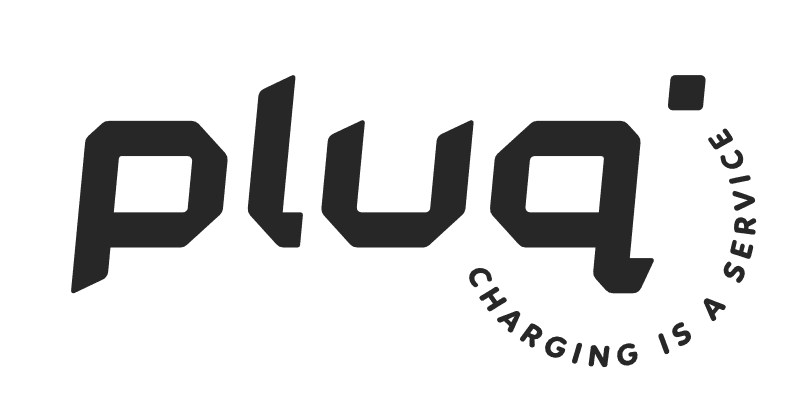Electric mobility has its own world of terms, abbreviations, and jargon. For industry insiders, it’s second nature — but for newcomers, it can feel like a foreign language. This guide is here to help. Below, you’ll find clear definitions of the most commonly used EV terms, from EV and BEV to SOC and UFC. Welcome to the ABC of electric driving and charging.
General EV terms
EV – Electric Vehicle. A plug-in vehicle powered by one or more electric motors using energy from a battery. EVs include cars, vans, and trucks, not gasoline, diesel, hydrogen, or conventional hybrids.
BEV – Battery Electric Vehicle. A fully electric vehicle powered only by a battery and electric motor. Often used in international or high-tech contexts.
PiV / Plug-in Vehicle – Any vehicle that charges via a plug, including BEVs and plug-in hybrids.
PHEV – Plug-in Hybrid Electric Vehicle. Combines a combustion engine and an electric motor. Ideal for short trips in electric mode.
Hybrid – Uses a combustion engine and a small electric motor but cannot be charged via a plug. The battery charges through braking and driving.
EREV – Extended Range Electric Vehicle. An EV with a small backup gasoline engine to recharge the battery when it’s low.
kW – Kilowatt. A measure of power. In technical terms, it usually refers to charging speed.
kWh – Kilowatt-hour. A unit of energy. This indicates the amount of energy a battery can store.
SOC – State of Charge. How full your EV’s battery is. Below 30%? Time to charge.
EVSE – Electric Vehicle Supply Equipment. All charging hardware, including stations, cables, and connectors.
Charging methods & station types
Mobile Charging – Charging via a standard power outlet using a portable cable.
EV Charging – The process of charging an electric vehicle.
Level 1 Charging – Uncontrolled charging via a home outlet, without smart features.
Level 2 Charging – Controlled using a basic socket (e.g., Shuko).
Level 3 Charging – Controlled AC charging via a dedicated EV charging station.
Level 4 Charging – High-speed DC charging at commercial or public stations.
Trickle Charging – Slow charging near full capacity. Also refers to low-output chargers.
Standard Charging—Charging at home, in public places, or at work using AC stations (e.g., at offices, schools, sports clubs, restaurants, etc.).
Destination Charging/Slow Charging—charging where you naturally spend time—at work, restaurants, hotels, theme parks, and more. Ideal for fleets and individuals alike, it turns idle time into charging time.
Fast Charging – Any DC charger with a power rating of 44 kW or more.
UFC / Ultra-Fast Charging: This system uses DC charging at 150 kW and higher. It is designed for rapid top-ups and heavy-duty EVs.
AC Charger – Uses alternating current. The EV converts it to DC via its onboard inverter.
DC Charger – Uses direct current to charge the battery directly. Also known as fast or ultra-fast chargers.
Smart Charging – Charging when electricity is cheapest or most renewable, managed by intelligent software.
Top-Up Charging – Adding enough charge to complete a trip without fully charging.
Load Balancing – Distributes available power across multiple charging points to prevent overload.
- Local Load Balancing – Power is shared between two or more EVs at a station.
- Dynamic Load Balancing – Real-time power distribution across all systems using a smart meter.
Buffering – Using on-site batteries to reduce stress on the grid and support high-demand charging.
Bi-Directional Charging – Enables energy from the grid to the EV and back to the grid or a building. This supports vehicle-to-grid (V2G) and vehicle-to-home (V2H) solutions, helping to balance energy loads.
Fleet charging
Fleet Charging – A strategic charging setup that supports electric delivery vans, trucks, or company cars. Often includes multiple chargers at logistics centers or depots. Efficiency, uptime, and energy management are key.
Fleet Charging Hub – A centralized site where multiple fleet vehicles charge simultaneously. These hubs are critical for businesses transitioning to electric fleets.
EV charging plug types
Type 1 (Yazaki) – Japanese AC charging connector (11-22 kW).
Type 2 (Mennekes) – European AC standard for 1-phase and 3-phase charging (up to 44 kW).
The CHAdeMO DC fast-charging connector is mostly found on Asian EVs and is usually attached to a fixed cable.
CCS Combo (Combined Charging System)—A Type 2 plug with two additional DC pins. It is widely supported and becoming standard (CCS2 is the latest version).
NACS – North American Charging Standard. Tesla’s compact DC charging connector is aiming to replace CCS.
More EV terms & definitions
RFID – Radio Frequency ID. Used to activate and pay for charging using a card or key fob.
CPO – Charge Point Operator. Responsible for installing, managing, and maintaining charging stations (e.g., Pluq).
CSP – Charge Service Provider. Offers charging subscriptions and services, sometimes referred to as an eMSP.
CaaS – Charging as a Service. A model where the provider (like Pluq) covers all infrastructure, installation, and maintenance costs.
LiOn – Lithium-Ion battery. The most common battery type in electric vehicles (EVs).
Range Anxiety – The fear of running out of battery before reaching a charging station.
ICEd – A charger blocked by an internal combustion engine (ICE) vehicle—a common frustration.
Charging Hub / EV Plaza – A site with multiple chargers for efficient energy management and high vehicle throughput.
Electric driving is evolving fast, and so is its vocabulary. Bookmark this EV Charging ABC and keep on learning.

